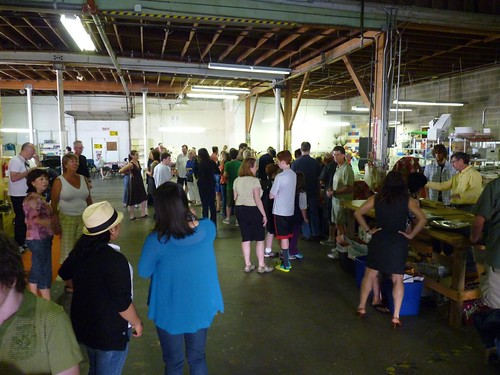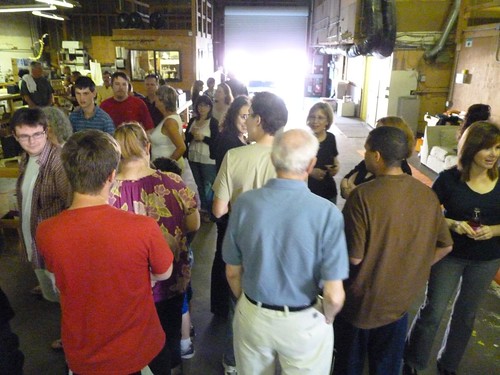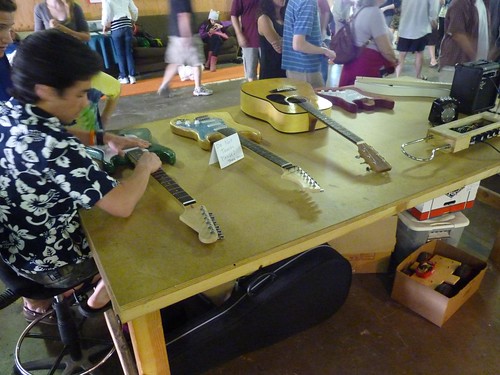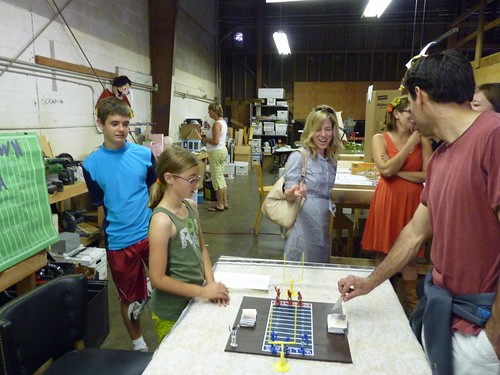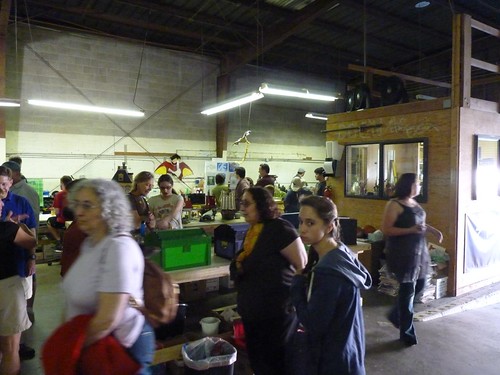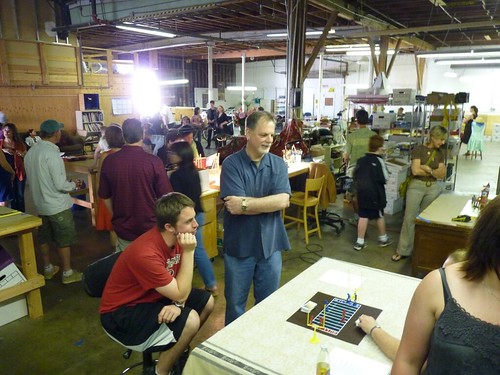Autistry Newsletter – May 26, 2012
Janet Lawson, MFT | May 26, 2012
 Spring time is blooming at Autistry this year. We saw an amazing array of projects created in the Build Workshops: guitars, tanks, a Theramin (look it up – it’s cool!), an original board game – Touchdown Trivia, treasure chests, Life Action Role Playing swords, airplanes, Dr. Who and the Tardis, wonderful dragons, a quilt, a dress, the trailer for an upcoming film project, a pendulum clock! Supporting all this creativity is certainly challenging the Autistry staff and keeping us all on our toes. And we love it.
Spring time is blooming at Autistry this year. We saw an amazing array of projects created in the Build Workshops: guitars, tanks, a Theramin (look it up – it’s cool!), an original board game – Touchdown Trivia, treasure chests, Life Action Role Playing swords, airplanes, Dr. Who and the Tardis, wonderful dragons, a quilt, a dress, the trailer for an upcoming film project, a pendulum clock! Supporting all this creativity is certainly challenging the Autistry staff and keeping us all on our toes. And we love it.
 Our first Puppet Core Workshop was a tremendous success. The students created several different types of puppets and gave a demonstration at the May Open House. Courtenay and Melissa will be teaching the Autistry Day Camp July 9 – 20. They will offer another Puppet Workshop in the fall semester beginning in August. Stay tuned for details.
Our first Puppet Core Workshop was a tremendous success. The students created several different types of puppets and gave a demonstration at the May Open House. Courtenay and Melissa will be teaching the Autistry Day Camp July 9 – 20. They will offer another Puppet Workshop in the fall semester beginning in August. Stay tuned for details.
 Several Autistry students participated in a panel discussion at the Marin Autism Collaborative Annual Meeting held at the Buck Institute earlier in May. The panelists spoke honestly and eloquently about their experience as individuals with Autism Spectrum Disorders at school, in relationships and on the job. The audience was spellbound as the students, ranging in age from 15 to 40, recounted personal stories of pain, humor and pride. The response has been overwhelming. We have been asked to participate in several other events bringing our voices to the discussion of autism.
Several Autistry students participated in a panel discussion at the Marin Autism Collaborative Annual Meeting held at the Buck Institute earlier in May. The panelists spoke honestly and eloquently about their experience as individuals with Autism Spectrum Disorders at school, in relationships and on the job. The audience was spellbound as the students, ranging in age from 15 to 40, recounted personal stories of pain, humor and pride. The response has been overwhelming. We have been asked to participate in several other events bringing our voices to the discussion of autism.
The Open House on May 20th was absolutely fabulous. We had over 100 people show up to view the projects, watch the films, experience the puppetry and enjoy wonderful food. These events bring the families together and give all of us a chance to talk to one another. A big Thank You to all the folks who donated to our Let There Be Light Fund. We collected enough to purchase new bulbs and fixtures for all the overhead shop lamps and rent the scissor lift so we can reach them. We even raised enough to purchase some hard hats to wear while working – very important for those of us on the ground.
I have saved the best news for last: this week we received a call from the Bothin Foundation. They are giving us a grant to purchase a laser cutter, a ShopBot and a 3D printer! With this equipment we will be able to launch our first Autistry Enterprise. To provide jobs for teens and adults with ASD has been a goal of Autistry since day one. The Core Workshops are designed as pre-vocational learning experiences leading to employment and/or college. But we have long understood that many of our students need actual work experience before entering the general employment arena. With this very generous grant we will be able to provide that experience.
We are looking forward to a great summer!





